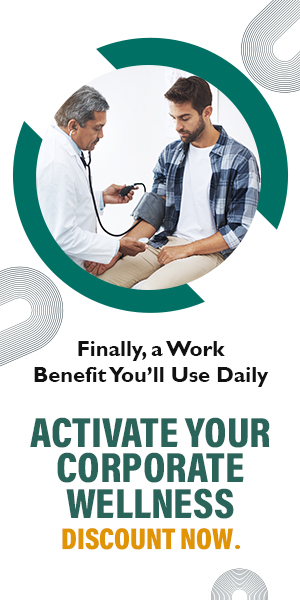Movement
What Should Your Post-Workout Routine Look Like?
Try these post-workout routines to prevent muscle soreness, repair tissues and facilitate a speedy recovery.

You just did an intense workout. Your muscles hurt and you're all sweaty. What you do next can greatly impact your gains and your ability to hit the gym again. While you might drink some water, stretch a bit, and grab a quick snack, there is more you can do to recover better. These things are good after a hard workout, but paying more attention to how you recover afterward can really make a difference in your routine and your everyday life.
Unlock insider access to the best movement plans for free! Sign up today.
Recovery is key to fixing muscles and getting stronger, especially after lifting heavy weights. Muscles need 24 to 48 hours to heal and get stronger. If you exercise them too soon, you're breaking them down, not building them up. For those who lift weights, it means you shouldn't exercise the same muscles on consecutive days. Every athlete or gym-goer has their own way of recovering so we searched the internet for the latest expert advice from researchers and fitness professionals.
Related story: Recovery 101: What To Do Post Workout
What Exactly Is Muscle Soreness And How To Overcome It?
Dr. Andrew Hueberman, an American neuroscientist and Dr. Andy Galpin, professor & scientist of fitness training studio, Human Performance Elite performer coach, in their YouTube podcast discussed the topic of muscle soreness and ways to deal with it. Dr. Andy explains, ‘one can get muscle soreness from exercise and have no measurable amount of muscle damage, so in other words, there is no single reason or factor that is probably causing your perception of pain. Muscle damage can be one of them but not the only one. The reason why muscle soreness happens is because muscles have a combination of immune cells, neutrophils and macrophages. Neutrophils are among the first responders to tissue damage, including muscle damage. When muscles undergo stress or trauma during exercise, neutrophils quickly migrate to the damaged site. Macrophages are highly specialised immune cells that help clean up damaged tissue.
- When you exercise, especially if you're engaging in high-intensity activities or resistance training that your body isn't used to, you create small, microscopic tears in your muscle fibres.
- The micro-tears in the muscle fibres trigger an inflammatory response in the body. The inflammation signals the body to repair the damaged muscle, which, over time, helps the muscles become stronger and more resilient.
- Your muscles repair themselves, they adapt to better handle the stress that caused the damage in the first place. This is a process known as muscle hypertrophy, where muscles grow stronger and sometimes larger. As a result, if you continue to exercise regularly, you'll likely experience less severe delayed onset of muscle soreness over time as your muscles adapt.
Related story: 7 Ways To Boost Post-Workout Muscle Recovery
Best Thing To Do After A Workout
So how do we recover after a workout? In another podcast series, Dr. Andy Galpin suggests, it is better to start the recovery process immediately after you workout. It is effective when it is done at the end of the current training session. Recovery after a workout is a critical component of any fitness regimen, ensuring that your body has the opportunity to repair and strengthen itself between exercise sessions. Recovery isn't just about muscle repair; it's about giving your entire body (including your nervous system and hormonal systems) the chance to recover and adapt to the stresses of physical activity.
Dr. Andy recommends a few effective ways to enhance the recovery process of muscle soreness after the exercise.
1. Listen to slow-paced music: After your workout, spend 10-20 minutes in a relaxed environment listening to slow-paced, calming music. Slow-paced music can help lower cortisol levels, a hormone associated with stress, creating a calming effect that facilitates recovery. Slow rhythms can decrease heart rate, helping your body shift from the sympathetic (fight or flight) to the parasympathetic (rest and digest) state, which is crucial for recovery.
Related story: How Music Can Heal Your Mind, Body, And Soul
2. Box breathing: This breathing technique can help reduce stress in the body, allowing for a quicker shift from the state of stress (sympathetic nervous system activation) to relaxation (parasympathetic activation).
How to do it?
- Find a quiet place to sit.
- Slowly exhale through your mouth, getting all the oxygen out of your lungs. Inhale slowly and deeply through your nose to a slow count of four. Hold your breath for another count of four.
- Exhale through your mouth for the same slow count of four. Hold your breath again for a count of four before beginning another cycle.
- Repeat this process for 4-5 minutes.
Related story: De-Stress in Four Minutes With Box Breathing
3. Meditation: Meditation can accelerate physical recovery from exercise by reducing stress and promoting a state of relaxation, which can improve the quality of sleep and aid in muscle repair.
How to do it?
- Choose a quiet and comfortable spot with your back straight and relaxed. Close your eyes and focus on your breath. Breathe naturally, without trying to control the breath.
- Be aware of the sensation of breathing in and out. If your mind wanders, gently bring your focus back to your breath.
- Start with 5-10 minutes of meditation and gradually increase the duration as you get more comfortable with the practice.
4. Cool Down: After intense exercise, gradually reduce your workout intensity over 5 to 10 minutes. This helps regulate blood flow and prevent dizziness. Engage in static stretching, focusing on major muscle groups. Holding each stretch for 15-30 seconds can help increase flexibility and reduce muscle tightness.
5. Replenish With Fluids: Drink water or electrolyte-rich drinks post-workout to replace fluids lost through sweat. Proper hydration aids in recovery and helps maintain bodily functions.
Related story: How Much Water Do You Really Need To Drink?
6. Increase Nutrition: Consume protein after your workout for muscle repair and growth. Aim for a protein-rich snack or meal within 45 minutes to an hour after exercising. Include a source of carbohydrates in your post-workout meal or snack. Don't shy away from healthy fats, as they're essential for overall health and can be part of your post-workout meals.
7. Ensure to Rest Adequately: Allow time for muscles to heal by resting or engaging in low-intensity activities on days following intense workouts. Aim for 7-9 hours of sleep per night. Sleep is when the majority of recovery and muscle repair occurs.
8. Use Recovery Tools: Foam rollers can reduce muscle tightness and improve blood flow. A good massage can alleviate muscle stiffness, promote relaxation, and enhance circulation.
Related story: Easy Guide To Releasing Stiffness With a Foam Roller
9. Try Cold Water Therapy: Taking an ice bath cools your body and skin, triggering a decrease in temperature. According to a 2022 study issued in the International Journal of Circumpolar Health, ice-cold water causes your skin's blood vessels to narrow (a process called vasoconstriction), prompting blood to move towards your core to maintain warmth. Upon leaving the ice bathtub, your blood vessels widen (vasodilation), facilitating the circulation of oxygen- and nutrient-enriched blood back into your body's tissues, such as the muscles. This sequence can aid in diminishing inflammation that often leads to delayed-onset muscle soreness following a workout.
10. Maintain Consistent Recovery Practises: Consistency is key to achieving desired results. Just as you plan your workouts, schedule recovery days into your weekly routine to ensure they're not overlooked. Be adaptable with your recovery practices, adjusting them based on how your body feels. Some days you might need more rest, while other times, active recovery could be more beneficial.
By prioritising recovery as an essential component of your overall fitness strategy, you not only enhance your physical and mental performance but also safeguard your long-term health and well-being. Consistent recovery practices, ranging from scheduled rest days to diversified recovery methods tailored to your body's needs, play a crucial role in preventing overtraining, reducing the risk of injury, and ensuring sustainable progress.
Unlock insider access to the best movement plans for free! Sign up today.
EXPLORE MORE
Instead of chasing long workouts, micro-movement shifts the focus from “Did I work out today?” to “Did I move often enough today?”
Pressed for time but craving results? These high-impact exercises burn maximum calories in minimum time, when done right.
Simple, practical fitness advice to help you feel stronger, healthier, and more consistent in 2026.
Callisthenics isn’t about flashy Instagram moves or avoiding the gym. According to celebrity fitness and lifestyle coach Krishna Sadvale, it’s one of the most practical ways to build strength, control, and confidence in your own body.






.jpg)

.jpg)
.jpg)
